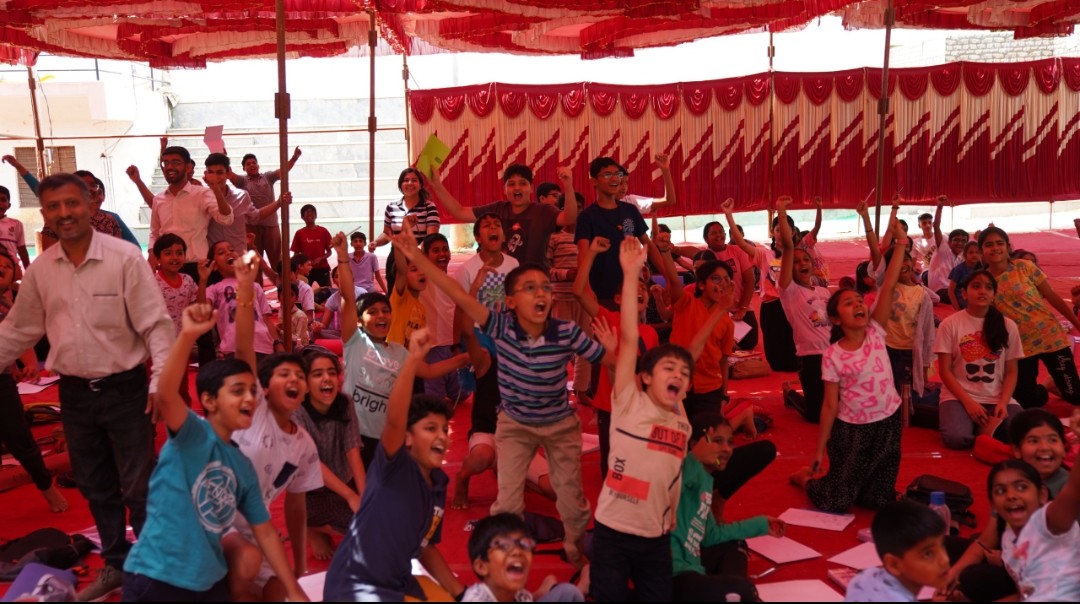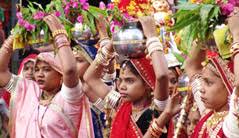THE AURA AND CHARM OF TEEJ IS AROUND
Teej Festival – Teej is one of the most sacred Hindu festivals observed in India. It is observed in different parts of the country by the womenfolk to seek blessings for their husband’s long life. Teej honours the devotion of Ma Parvati who underwent penance for years to become the consort of Shiva. Women seek her blessings for a happy married life and unmarried girls fast to attain an exemplary husband like Shiva.
When is Teej 2017
Teej Festival date: July 26 (Wednesday), 2017
Hartalika Teej: August 24 (Thursday), 2017
There are three types of Teej celebrated in India. These are Haryali Teej, Hartalika Teej and Kajri Teej. The Hariyali Teejalso known as ‘Chhoti Teej ’held in the Shravana. This is followed by Kajari Teej also called ‘Badi Teej’, held after fifteen days of Hariyali Teej. The third type of Teej, Haritalika Teej falls in the ‘Bhado’ month and is held almost a month after Haryali Teej. Though customs may differ from state to state, the unifying factor is that women of all state seek the blessings of marital happiness and long life of their husband.
History and Origin of Teej
Etymologically, the festival ‘Teej’ gets its name from a small red insect called ‘Teej’ that makes its appearance during the monsoon. Teej has been observed for several years. According to Hindu mythology, this day marks the occasion of Maa Parvati coming to Shiva’s abode as his consort. Teej is symbolic of the love, devotion and respect for a Hindu woman’s husband, as Ma Parvati underwent extreme penance over several births for 108 years to win over Lord Shiva.
Another legend is that a forest in Central India was once ruled by King Dadurai, whose wife Sati Nagamati performed Sati by burning herself in a funeral pyre. The sadness engulfed the people of Kajli who created Raga Kajariin her honour.
Types of Teej
There are three types of Teej. These are Haryali Teej, Hartalika Teej and Kajri Teej.

Hariyali Teej
Haryali Teej is pre-dominantly followed in Rajasthan, Madhya Pradesh and Maharashtra and also in some parts of Haryana, Punjab and Bihar. It is held in the Shraavan month. The greenery during the Shraavan month forms the perfect setting for performing traditional songs and dancing during Haryali Teej. The Hariyali Teej of Vrindawan is known for its festive air, as Krishna and Radha’s idols are especially decorated and the golden swing is displayed which attracts visitors from all over the world. Women offer prayers to goddess Parvati and after the prayers they sing the folk songs of marital bliss. In many places, fairs are also organized.
Kajri Teej
Kajari Teej also known as Badi Teej is celebrated on the third day of Krishna Paksha (dark fortnight) of the Hindu month of Bhadrapada. Kajri Teej gets its name from the blackish hue of clouds that signal the onset of rains. Kajri Teej is celebrated in Madhya Pradesh and in Uttar Pradesh, especially Mirzapur and Varanasi.
Hartalika Teej
Hartalika Teej takes its name from the name ‘Hartalika’ by which Ma Parvati is known. The festival coincides with the first fortnight of the Bhadrapad month. It is native to the Northern and western parts of India and is celebrated in Madhya Pradesh, Chhattisgarh, Bihar, Jharkhand, Rajasthan and is some parts of Maharashtra.
Teej rituals and puja process
Women gather in a place to install the idol of Ma Parvati and offer flowers, fruits, sweets, ‘sindoor’ or vermillion. On or two persons read out the Teej Vrat Katha. Unmarried girls also devotedly listen to the Katha. In some places, after the ‘puja’ women follow the custom of bathing themselves with mud around the Datiwan plant to be rid of their bad karma. A very important ritual is to light an oil lamp that is supposed to be lit uninterruptedly through the night.
Some women do ‘vrata’ or fast by consuming only fruits and some do ‘nirjala’ vrata without a drop of water and also refrain from sleep. During Kajri Teej, women gather around the holy neem tree and pay obeisance to the neem plant.
Customs
Women apply ‘mehendi’ (floral patterns made with henna paste) on their hands and feet, wear beautiful sarees with matching bangles and ornaments on this day. Usually, green is the more favoured colour especially during ‘Hariyali Teej’. Those observing Teej get cosmetic items and jewellery for ‘Shringara’ by their parents. Women offer decorated coconut to their relatives. They visit their maternal home and seek the blessings of the elderly and enjoy a get together with family members.
Teej dance imitates the beautiful dance of the peacock during the rains. Women take turns while singing in swings bedecked with flowers. Songs that are paeans to the monsoon season and marital happiness, and others that are reminiscent of lovers’ woes of separation are sung, especially during Kajri Teej.
One of the main attractions of Kajari Teej of Bundi in Rajasthan is the procession wherein the Teej Goddess is taken through the city. The procession starts from Naval Sagar in an ornamented palanquin. Cultural folk music and dance performances are held in Bundi, Rajasthan.
Food
A variety of regional traditional sweet dishes are made such as ‘ghevar’, ‘kheerpuri’, ‘nariyalladdoo’, ‘badamkahalwa’, ‘sheera’, ‘gujiya’ and ‘kajukatli’ are prepared during Teej, as family members and groups of married women get together.
Courtesy : indiaonlinepages.com
Image Courtesy : teejfestival.org






